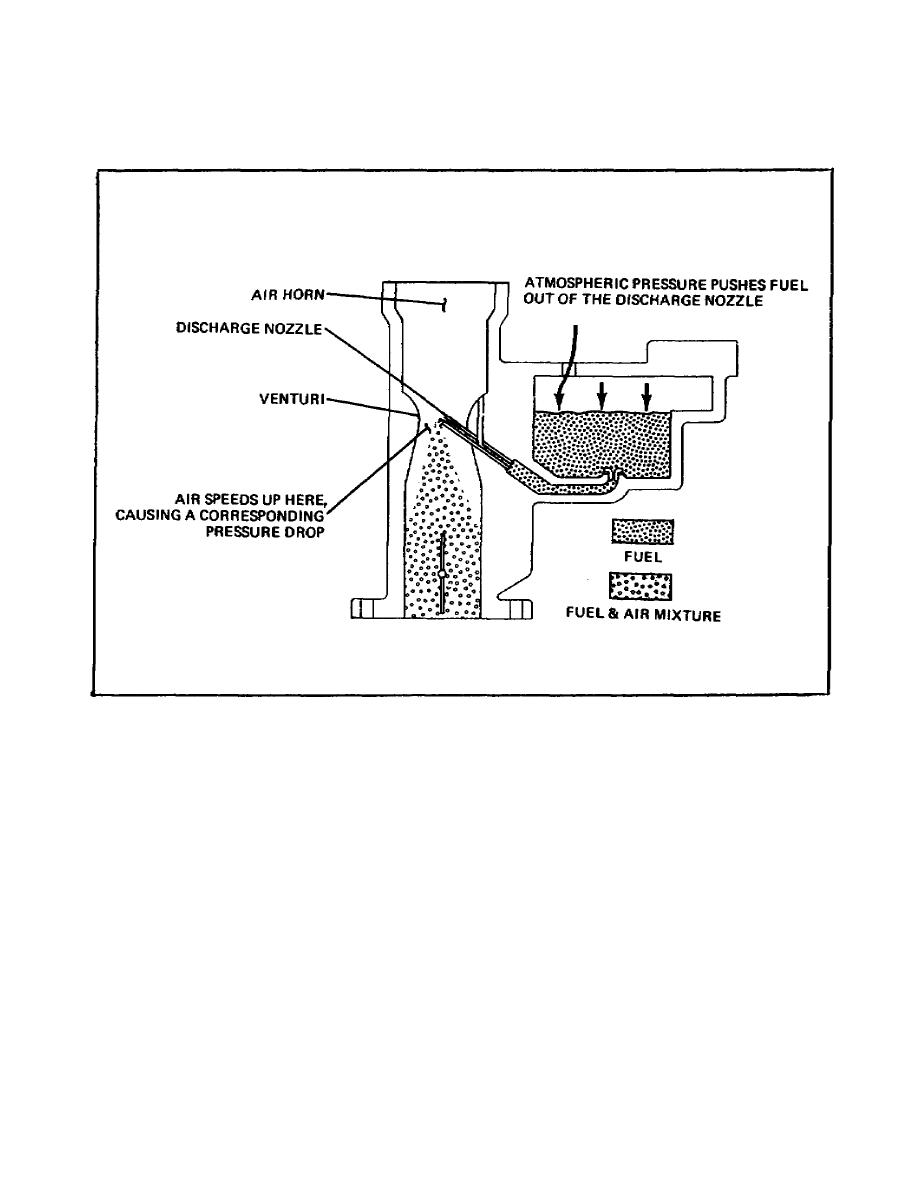
Lesson 1/Learning Event 2
FIGURE 8. VENTURI EFFECT.
The venturi is an hourglass-shaped restriction in the airflow passage (called the throat, bore, or barrel) in the
carburetor. Normally, the air flows rapidly through the throat of the carburetor on its way to the engine
cylinders. When the fast-moving air reaches the venturi, it must speed up to get through the restriction.
When the air speed increases in the venturi, however, there is a drop in the air pressure. The faster the air
moves, the more the pressure drops.
This principle also applies to the nozzle on a water hose. The nozzle itself is a restriction. The water speed
increases as it leaves the hose and passes through the nozzle. That is why a stream of water leaving the
nozzle travels much farther through the air than it does when there is no nozzle on the hose.
The important thing to remember about a venturi is that for any increase in the speed of the flow, there is a
decrease in pressure. The pressure on the air entering the air horn (mouth) of the carburetor is about 14.7
pounds per square inch (PSI). This is normal atmospheric (air) pressure at sea level.
15





 Previous Page
Previous Page
